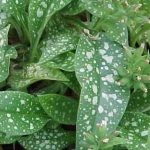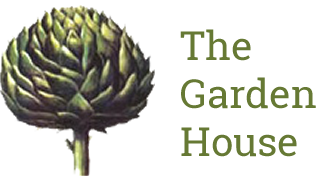Plant of the Month: Pulmonaria
Posted:14 February 2012
We are all eagerly awaiting the first herbaceous perennials of the year and the Pulmonarias always come up trumps! Pulmonaria rubra AGM (Award of Garden Merit) is always the first to flower, and needs to be observed at close quarters to see how lovely it is.
Pulmonarias are members of the borage family, (Boraginaceae). Along with their cousins, comfrey, borage, brunnera, forget-me-nots and anchusa, pulmonarias have hairy leaves and small funnel-shaped flowers. The common name is lungwort – The name Pulmonaria comes from the Latin pulmo, the lung. The plant was considered to be an effective remedy for diseases of the lung because the spotted leaves were supposed to resemble diseased lungs.
 Pulmonarias are evergreen perennials and thrive in humus-rich, moist but not waterlogged soil and do well in full or partial shade, which is an added bonus. They make brilliant ground cover plants in woodland or at the front of a border and the bees love them! They are very hardy. Height & spread of up to 40cm (16in) x 90cm (36in)
Pulmonarias are evergreen perennials and thrive in humus-rich, moist but not waterlogged soil and do well in full or partial shade, which is an added bonus. They make brilliant ground cover plants in woodland or at the front of a border and the bees love them! They are very hardy. Height & spread of up to 40cm (16in) x 90cm (36in)
The leaves are hairy and often spotted with white or silver. The leaves that develop after flowering have the best markings. Flowers can be pink, red, violet, purple, blue or white. They are funnel-shaped, 5-10mm (0.25 – 0.5in) across with 5 petals.
- Redstart has coral-red flowers and is often the first Pulmonaria to flower in midwinter. Barfield Pink has pink and white striped flowers and grows up to a height of 30cm (12in).
- P. r. var. albocorollata syn. alba has white flowers and David Ward has white-variegated, sage-green leaves with cream margins and coral-red flowers. Both reach a height of 30cm (12in).
- Bowless Red, developed by Edward Bowles, has coral-red flowers and leaves faintly spotted pale green. It grows to 30cm (12in) and is similar to Redstart. Remove old leaves after flowering and divide every 3 – 5 years.
To propagate Pulmonarias, divide plants in autumn or after flowering or take root cuttings in mid-winter. Powdery mildew may be a problem in dry conditions and slugs and snails may damage new growth – but don’t let this put you off, they are super-useful plants to have in the garden!

